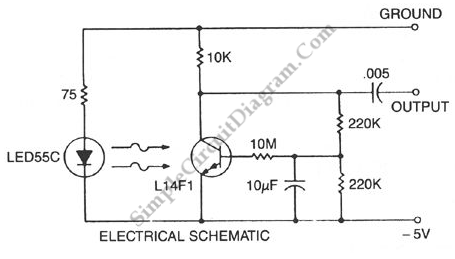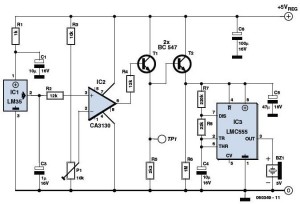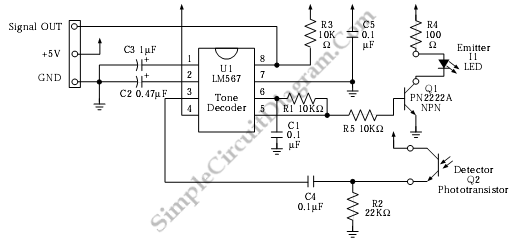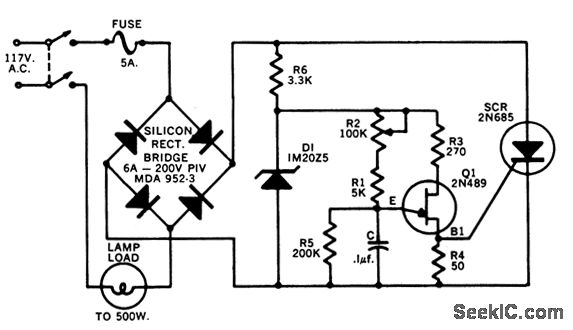
Light Level Droplets Detector

This circuit is a Low-Light Level Drop Detector. It utilizes a self-biasing configuration to detect small changes in light levels.
The Low-Light Level Drop Detector circuit is designed to sense minute variations in ambient light conditions, making it suitable for applications in environments where light levels are consistently low. The self-biasing configuration employed in this circuit allows it to maintain a stable operating point without the need for external biasing components, enhancing its sensitivity to light changes.
The core of the circuit typically consists of a photodetector, such as a photodiode or phototransistor, which converts light into an electrical signal. This signal is then processed through an operational amplifier configured in a transimpedance mode, allowing for the conversion of the current generated by the photodetector into a voltage signal. The gain of the operational amplifier can be adjusted to optimize the circuit's sensitivity to light variations.
In addition, the circuit may include a filtering stage to eliminate noise and enhance the signal-to-noise ratio, ensuring that only significant changes in light levels are detected. The output can be further processed or used to trigger other devices, such as alarms or lighting systems, based on the detected light levels.
Overall, the Low-Light Level Drop Detector circuit is an effective solution for monitoring and responding to subtle changes in lighting conditions, making it valuable in various applications, including automatic lighting control, security systems, and environmental monitoring.This is a circuit of Low-Light Level Drop Detector. This circuit utilize self-biasing configuration to detect small changes in light level. This circuit.. 🔗 External reference
The Low-Light Level Drop Detector circuit is designed to sense minute variations in ambient light conditions, making it suitable for applications in environments where light levels are consistently low. The self-biasing configuration employed in this circuit allows it to maintain a stable operating point without the need for external biasing components, enhancing its sensitivity to light changes.
The core of the circuit typically consists of a photodetector, such as a photodiode or phototransistor, which converts light into an electrical signal. This signal is then processed through an operational amplifier configured in a transimpedance mode, allowing for the conversion of the current generated by the photodetector into a voltage signal. The gain of the operational amplifier can be adjusted to optimize the circuit's sensitivity to light variations.
In addition, the circuit may include a filtering stage to eliminate noise and enhance the signal-to-noise ratio, ensuring that only significant changes in light levels are detected. The output can be further processed or used to trigger other devices, such as alarms or lighting systems, based on the detected light levels.
Overall, the Low-Light Level Drop Detector circuit is an effective solution for monitoring and responding to subtle changes in lighting conditions, making it valuable in various applications, including automatic lighting control, security systems, and environmental monitoring.This is a circuit of Low-Light Level Drop Detector. This circuit utilize self-biasing configuration to detect small changes in light level. This circuit.. 🔗 External reference





